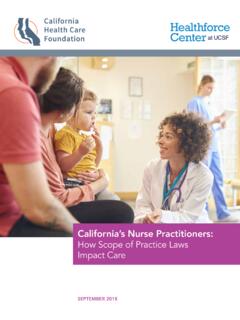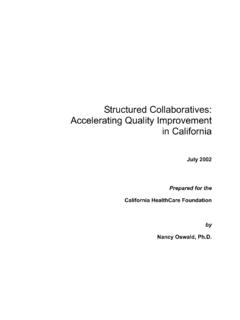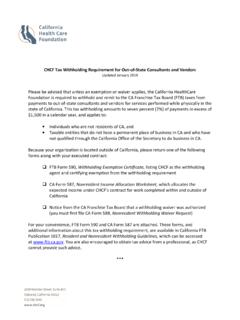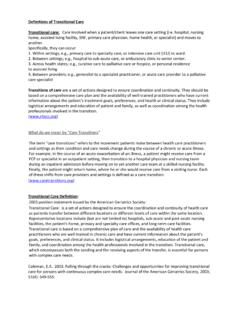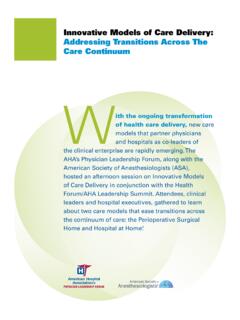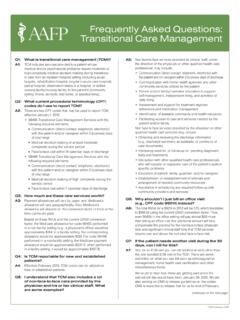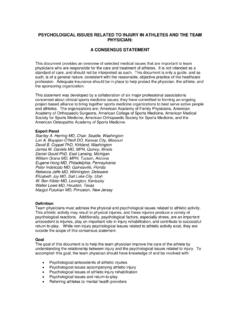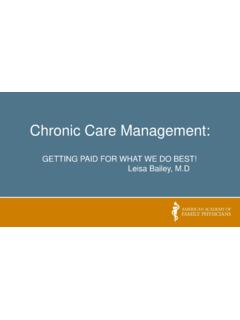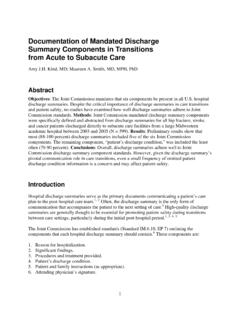Transcription of The Post-Hospital Follow-Up Visit - California Health Care ...
1 Issue BrIefOc tO b e r 2010CA LIFORNIAHEA LTHCAREFOUNDATIONThe Post-Hospital Follow-Up Visit : A physician Checklist to Reduce ReadmissionsIntroductionPrimary care practices are uniquely positioned to intervene with their recently discharged patients to prevent unnecessary hospital readmissions. The Post-Hospital Follow-Up Visit presents a critical opportunity to address the conditions that precipitated the hospitalization and to prepare the patient and family caregiver for self- care activities. Despite the importance of the Visit during this vulnerable post-discharge time period, little specific attention has been paid to it in the literature, and there has not been well-established consensus on best practices for this type of encounter.
2 To begin filling the gap, this issue brief presents a proposed checklist for Post-Hospital Follow-Up visits for primary care physicians. It draws from diverse sources including published protocols found in the scientific literature and unpublished approaches identified via the Internet. Leading textbooks of family medicine, geriatric medicine, and internal medicine were reviewed and leaders of the American Board of Family Medicine and the American Board of Internal Medicine were consulted. In addition, thought leaders with expertise in Health care delivery were interviewed and asked to describe innovations implemented in their organizations.
3 New Emphasis on Post-Hospital VisitsRecent national policy developments aimed at aligning financial incentives to reduce preventable hospital readmissions have prompted greater focus on Post-Hospital ambulatory visits. For example, the newly enacted Health reform law promotes bundled payments approaches, accountable care organizations, and study of a new payment code for services furnished by an appropriate physician who sees an individual within the first week after discharge from a The success of bundled payment and accountable care organization pilot and demonstration programs hinges, in part, on ensuring timely and effective Post-Hospital Follow-Up visits.
4 Further, patient-centered medical homes are expected to play a greater role in coordination of care in exchange for added monthly per-patient payments. In addition, the Transitions of care Consensus Policy Statement, jointly endorsed by six physician professional societies, recommends principles and standards that address the physician s accountability in managing care transitions between the inpatient and outpatient These initiatives are in part predicated on the assumption that primary care practices are both well positioned and well prepared to intervene in the cycle of hospital readmission.
5 Yet aside from determining the timing of the Post-Hospital Follow-Up appointment, the ideal Visit content has received relatively little attention in primary care physician training and certification from the American Boards of Family Medicine and Internal Medicine. Similarly, the approach to the Post-Hospital Visit is not identified as a general competency in leading textbooks of ambulatory care 6It should also be noted that timely Follow-Up care can be especially challenging for patients without 2 | ca l i fO r n i a He a l tHca r e fO u n d a t iO nan established primary care provider, given the extensive waiting times for a new patient to establish care in a primary care Financial Alignment with physician PracticeThe large majority (78 percent)
6 Of primary care practices in the United States have five or fewer physicians supported by medical assistants and Typically, these ambulatory practices do not employ nurses, case managers, pharmacists, or social workers. The proposed checklist, therefore, is focused on the physician s role, although clinics that do have ancillary clinicians could determine how to share the work among team members. Further, some of the checklist elements could be performed in conjunction with Health care professionals external to the practice working in community pharmacies, home Health care agencies, federally sponsored Area Agencies on Aging, and other community-based service providers.
7 The checklist is intended to be compatible with the typical outpatient clinic routine and to suggest how time may be used most efficiently and effectively. With all that needs to be done and the time constraints, a check-list can be a huge help, said Sophia Chang, , director of the Better Chronic Disease care program at the California HealthCare Foundation. Primary care practices perform a significant number of non-compensated tasks that compete for time that could otherwise be devoted to direct patient 11 The recently enacted Health reform law will likely increase these demands.
8 Primary care clinics will need to be even more engaged in coordinating care across settings, accommodating an influx of Americans who recently obtained Health care insurance, and reducing preventable hospital number of Health care organizations have already begun to align financial incentives with the provision of timely Post-Hospital care . Capitol District Physicians Health Plan in New York provides financial incentives for primary care physicians to see their patients within seven business days of discharge.
9 If this Visit is accomplished, the practice may bill at the highest evaluation and management code level for a Follow-Up Visit and it also receives a $150 bonus payment. This program, coupled with a telephone assessment performed by a case manager, has reduced 30-day hospital readmission rates from 14 percent to 6 percent. CareMore Health Plan and Medical Group in California has shifted the performance of Post-Hospital Follow-Up care from primary care physicians to its hospitalists. Each month, hospitalists are profiled based on their readmission rates and are given 30-day readmission rate targets.
10 The hospitalists are financially rewarded when these targets are met or exceeded. Consequently, they are keenly engaged in Post-Hospital care and assume a major role in decisionmaking about its timing and mode. The hospitalist may see the patient one or more times in a Follow-Up clinic and/or perform Follow-Up telephone calls. The hospitalist determines when patients will resume care with their primary care Findings and DiscussionThe evidence is mixed with regard to the overall value of the Post-Hospital Visit .



